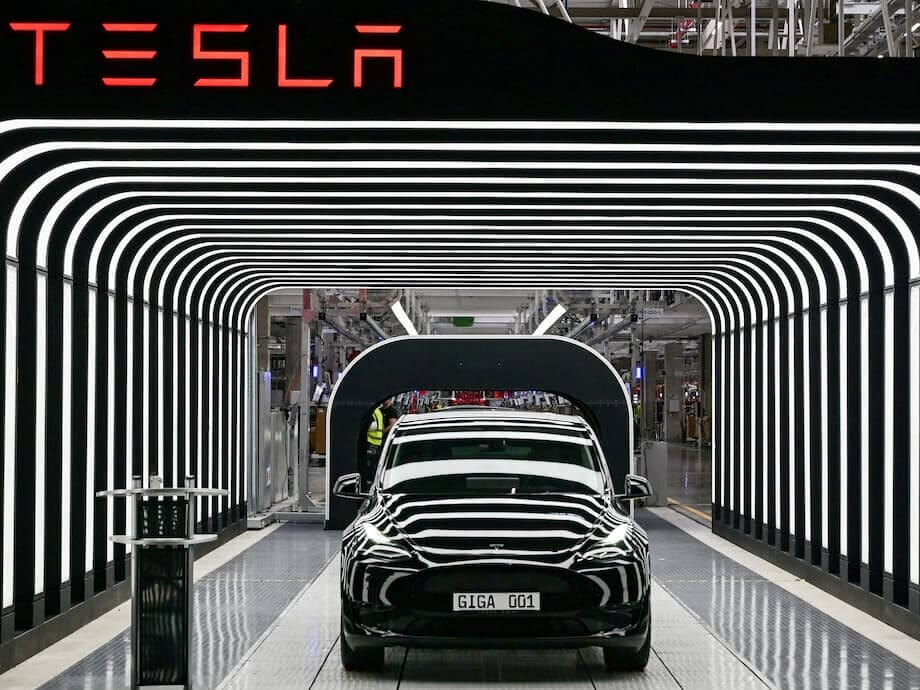Tesla’s European Sales Slump: A Turning Point in the EV Race
In July 2025, Tesla, once the undisputed leader in Europe’s electric vehicle (EV) market, suffered a dramatic 40% drop in sales compared to the previous year. At the same time, Chinese automaker BYD (Build Your Dreams) surged ahead, tripling its European sales and overtaking Tesla for the first time. This seismic shift signals not only a changing competitive landscape but also deeper transformations in consumer preferences, government policies, and the broader automotive industry.
According to the European Automobile Manufacturers’ Association (ACEA), Tesla sold just 8,837 cars across the EU, the European Free Trade Association (EFTA), and the UK in July, down from 14,769 a year earlier. Meanwhile, BYD’s new car registrations soared to 13,503, up from 4,151, giving it a 1.2% market share compared to Tesla’s 0.8%.
This reversal marks the seventh consecutive month of declining market share for Tesla in Europe and highlights the rapid ascent of Chinese EV brands, which now command a record 5.1% share of the European market—nearly double their share from early 2024. The implications extend far beyond two companies, touching on everything from global trade tensions to the future of green mobility in Europe.
Why Is Tesla Losing Ground in Europe?
Tesla’s sharp decline in European sales is the result of a complex interplay of factors, ranging from increased competition and shifting consumer sentiment to political controversies and regulatory hurdles.
Intensifying Competition from Chinese and European Brands
Chinese automakers, led by BYD, have aggressively expanded their presence in Europe. BYD’s strategy combines affordable pricing, a rapidly growing dealership network, and a diverse lineup of both fully electric and hybrid vehicles. In contrast, Tesla’s European lineup has remained largely unchanged, with the Model Y and Model 3 making up the bulk of its sales. Even the updated Model Y, launched in March 2025, failed to reverse Tesla’s fortunes, with registrations in key markets like Sweden and Denmark dropping sharply.
BYD’s rise is not an isolated phenomenon. Other Chinese brands, such as SAIC Motor (which owns MG), have also gained ground. SAIC Motor secured a 1.9% market share in the EU between January and July 2025, after a 30% jump in sales. Meanwhile, European legacy automakers like Volkswagen, Renault, and BMW have increased their EV offerings and posted year-on-year gains in new car registrations, further squeezing Tesla’s share.
Price Sensitivity and Product Variety
European consumers are increasingly price-conscious, especially as inflation and economic uncertainty persist. BYD’s vehicles, often priced below €37,000, qualify for government subsidies and appeal to cost-sensitive buyers. Tesla, despite several rounds of price cuts, has struggled to match the affordability and variety offered by its Chinese rivals and local competitors. In France, for example, Tesla’s market share fell from 1.6% in 2024 to just 0.9% in 2025, as buyers turned to domestic brands like Renault.
Political and Reputational Challenges
Tesla’s image in Europe has suffered due to CEO Elon Musk’s increasingly controversial political activities. Musk’s public support for far-right parties in Germany and the UK, as well as his involvement in US politics, has alienated many European consumers. Surveys indicate that a significant portion of potential buyers are put off by Musk’s behavior, with more than 70% of Brits and Germans holding an unfavorable view of the Tesla CEO as of January 2025. Protests and calls for boycotts have further dampened demand, especially in markets like Germany and the UK.
Regulatory and Technological Hurdles
Strict European regulations have also hampered Tesla’s ability to deploy its signature self-driving features, putting it at a disadvantage compared to rivals. While BYD has introduced its “God’s Eye” driver-assistance system at no extra cost, Tesla’s Full Self-Driving (FSD) package remains unavailable or restricted in many European countries due to safety and compliance concerns.
Additionally, the European Union’s imposition of tariffs—up to 27%—on Chinese-made EVs has not slowed BYD’s momentum, as the company continues to offer competitive prices and plans to open local production facilities, such as a new plant in Hungary.
BYD’s Meteoric Rise: How Did the Chinese Giant Overtake Tesla?
BYD’s ascent in Europe is the result of a well-executed strategy that leverages its strengths in technology, manufacturing, and market adaptation.
Affordable, Diverse, and Innovative Products
BYD offers a wide range of vehicles, from compact city cars to SUVs, many of which are available as both fully electric and plug-in hybrid models. This flexibility allows BYD to cater to varying consumer preferences across Europe, where hybrids remain popular in markets with limited charging infrastructure.
Technological innovation has also played a key role. In March 2025, BYD unveiled a breakthrough in battery charging technology, enabling 250 miles of range in just five minutes—outpacing Tesla’s fastest charging capabilities. Such advancements have helped BYD attract tech-savvy buyers and position itself as a leader in EV innovation.
Rapid Expansion and Local Investment
BYD has rapidly expanded its dealership network and plans to enter 12 more European countries by the end of 2025. The company’s decision to establish local production in Hungary is expected to further reduce costs and mitigate the impact of EU tariffs, making its vehicles even more competitive.
Government Incentives and Market Timing
BYD has benefited from favorable government policies in several European countries. For example, Germany’s new EV incentive plan, introduced in June 2025, led to a 58% increase in battery electric vehicle sales and an 83.6% jump in plug-in hybrid sales in July. BYD’s hybrid models, which qualify for many of these incentives, have proven especially attractive to buyers seeking lower upfront costs and flexibility.
The Broader European EV Market: Growth Amid Turbulence
Despite Tesla’s struggles, the European EV market is booming. In July 2025, new car registrations across the EU, EFTA, and UK rose 5.9% year-on-year, with battery electric vehicle (BEV) sales jumping 39.1% and plug-in hybrid sales surging 56.9%. Electrified vehicles (including hybrids and plug-in hybrids) accounted for nearly 60% of all new car sales—a record high.
From January to July 2025, 1.011 million new BEVs were registered in the EU, representing 15.6% of the market. Hybrid-electric car registrations were even higher, with 2.255 million units sold, driven by strong growth in France, Spain, Germany, and Italy. However, overall new car registrations in the EU declined by 0.7% in the first seven months, reflecting ongoing economic headwinds and shifting consumer priorities.
Winners and Losers Among Automakers
While Tesla and other non-Chinese brands like Stellantis, Hyundai, Toyota, and Suzuki posted year-on-year declines in July, Volkswagen and Renault Group saw increases in new European car registrations. The Tesla Model Y remained the top-selling BEV in Europe for the first half of 2025, but its lead is narrowing as new models from BYD, MG, and European brands gain traction.
Chinese brands, led by BYD, have nearly doubled their collective market share in Europe from 2.7% in early 2024 to 5.1% in the first half of 2025. This surge has allowed them to surpass Ford and nearly match Mercedes in total sales.
Regional Variations and Policy Impacts
EV adoption rates vary widely across Europe. Germany, Spain, Poland, and Austria recorded significant increases in car sales in July, while the UK, France, and Italy saw declines. Government incentives, such as the UK’s new electric car grant scheme (offering up to £3,750 off eligible models), are helping to stimulate demand, but the market remains volatile.
Industry leaders have warned that the EU’s ambitious target to end the sale of new combustion engine cars by 2035 may no longer be feasible, citing challenges such as insufficient charging infrastructure, high vehicle prices, and volatile consumer confidence. Sigrid de Vries, director general of ACEA, emphasized the need for expanded public recharging infrastructure, lower recharging prices, and well-coordinated purchase incentive schemes to accelerate EV adoption.
What’s Next for Tesla and the European EV Market?
Tesla’s future in Europe hinges on its ability to adapt to a rapidly changing market. The company has announced plans to launch a more affordable electric car, with volume production expected in the second half of 2025. Investors and analysts hope this new model will help Tesla regain lost ground, but the company faces an uphill battle against increasingly sophisticated and aggressive competitors.
Elon Musk has shifted Tesla’s focus toward artificial intelligence, robotics, and autonomous driving, but these technologies have yet to translate into tangible sales gains in Europe. Regulatory barriers and consumer skepticism about self-driving features remain significant obstacles.
Meanwhile, BYD and other Chinese brands are poised to continue their expansion, leveraging their cost advantages, technological innovation, and adaptability to local market conditions. European automakers are also ramping up their EV offerings and investing in local supply chains to compete more effectively.
The broader EV market in Europe is likely to remain highly competitive and dynamic, with government policies, consumer preferences, and technological breakthroughs shaping the pace and direction of change. As electrification accelerates, the winners will be those who can offer affordable, reliable, and innovative vehicles while navigating the region’s complex regulatory and political landscape.
In Summary
- Tesla’s European sales plunged 40% in July 2025, while BYD’s sales more than tripled, allowing the Chinese automaker to overtake Tesla for the first time.
- BYD’s success is driven by affordable pricing, diverse product offerings, rapid expansion, and technological innovation.
- Tesla faces challenges from increased competition, price sensitivity, political controversies, and regulatory hurdles in Europe.
- The European EV market is growing rapidly, with electrified vehicles accounting for nearly 60% of new car sales in July 2025.
- Chinese brands now hold a record 5.1% market share in Europe, nearly doubling their presence from early 2024.
- Government incentives and local policies continue to shape EV adoption, but industry leaders warn that ambitious climate targets may be difficult to achieve without further investment in infrastructure and incentives.
- Tesla’s future in Europe depends on launching more affordable models, regaining consumer trust, and overcoming regulatory barriers to new technologies.












